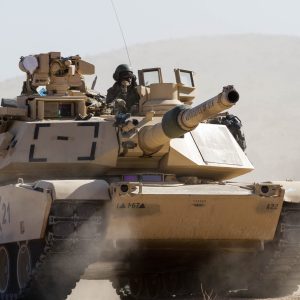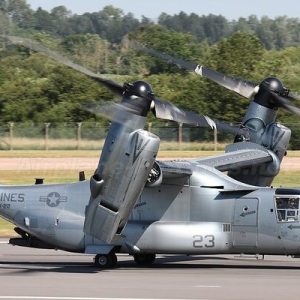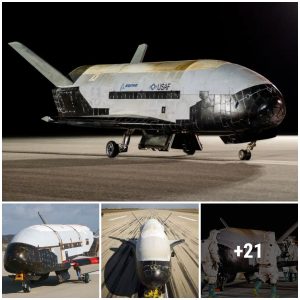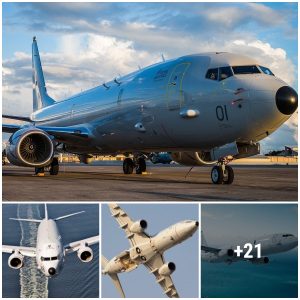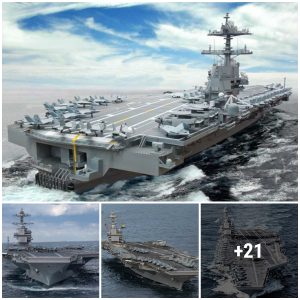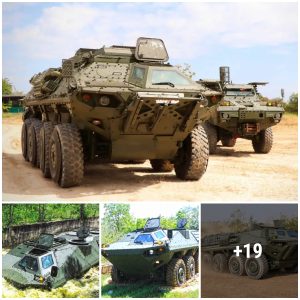With a unique design, the V-22 Osprey is the only US transport aircraft that can fly in multiple modes.
Since the failure of Operation “Eagle Claw” to rescue 52 hostages held in Iran in 1980, it was emphasized that there were military roles for which neither conventional helicopters nor fixed-wing transport aircraft were suitable. The US Department of Defense launched a program of transport aircraft capable of vertical take-off, high-speed flight and long-range operation.

The Joint-service Vertical take-off/landing Experimental program officially commenced in 1981. By 1989, the prototype V-22 was launched and tested. Because of the complexity of the design, with engines that could rotate 90 degrees, testing of the aircraft lasted until the mid-2000s. By June 2007, V-22 Osprey was officially put into service with the US Marine Corps. The U.S. Air Force fielded their version of the tiltrotor, the CV-22B, in 2009.

In terms of design, the Osprey is completely different from the rest of the world of aircraft. It has a length of 17.48 m, a wingspan of 13.97 m, a width of 25.776 m, and a height of 6.73 m. Its empty weight is 14.43 tons, and its maximum take-off weight is 19.37 tons. It features a cockpit that includes a side-by-side seating arrangement with framed canopy windscreen allowing for above, side and forward views of the action behind a short, sloping nosecone.
The passenger cabin is directly aft of the cockpit with access doors along the sides of the forward fuselage. The fuselage carries a noticeably bulged lower sides while the straight-wing appendages are seated atop the roof at amidships. Each wing root manages a positional engine nacelle which can face upwards for or tilt horizontally to direct power for forward flight as needed. Each engine powers a large, three-bladed composite rotor assembly.
The Osprey is classified as a powered lift aircraft by the Federal Aviation Administration. For takeoff and landing, it typically operates as a helicopter with the nacelles vertical and rotors horizontal. Once airborne, the nacelles rotate forward 90° in as little as 12 seconds for horizontal flight, converting the V-22 to a more fuel-efficient, higher speed turboprop aircraft. Composite materials make up 43% of the airframe, and the proprotor blades also use composites. For storage, the V-22’s rotors fold in 90 seconds and its wing rotates to align, front-to-back, with the fuselage.
